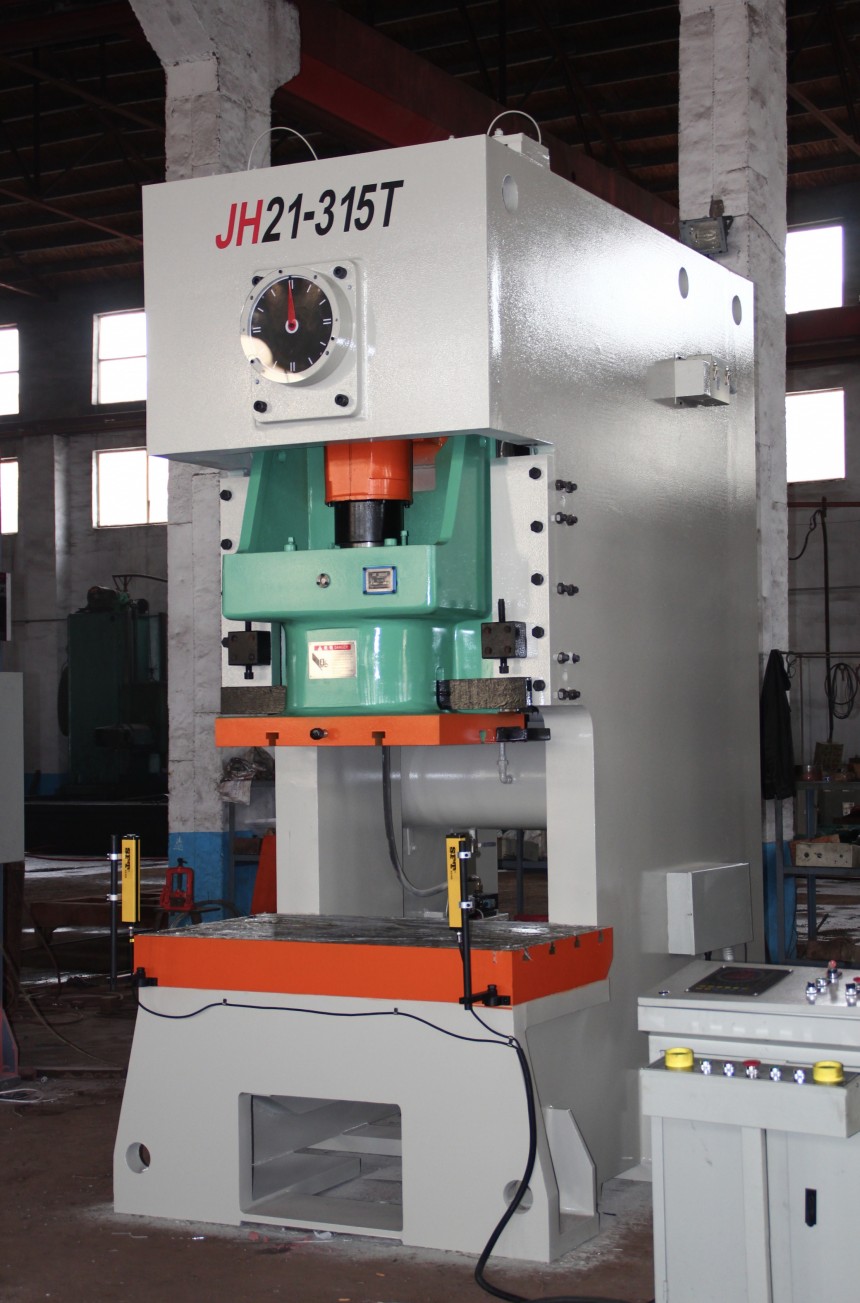We are a professional punching machine manufacturer with over 10 years of industry experience. Today, we would like to introduce you to the design and manufacture of automatic punching machines:

Automatic punching machine is a kind of mechanical equipment that utilizes stamping process to process metal, plastic and other materials efficiently, which is widely used in automobile manufacturing, electronic components, hardware products and other industries. Its core function is to apply pressure to the material through the mold to complete the process of punching, dropping and molding. The design and manufacture of automatic punching machine need to consider the mechanical structure, power system, control mode and safety performance.
1, Design Points
(1)Mechanical structure design
The body of automatic punching machine usually adopts C-type or gantry frame to ensure sufficient rigidity and stability. Punching mechanism consists of crankshaft, connecting rod and slider, which converts the rotary motion of motor into up and down reciprocating motion. The stroke of the slider and the punching force should be calculated according to the thickness and strength of the processed material to ensure a stable and efficient punching process. The working table should be flat and equipped with adjustable mold fixing device to adapt to the processing needs of different specifications.
(2)Power system selection
The power source of punching machine mainly has mechanical drive, hydraulic drive and servo drive three ways. Mechanical press has simple structure and high efficiency, suitable for mass production; hydraulic punching machine has adjustable pressure, suitable for thick plate or deep punching process; servo press can accurately control the speed and position, suitable for high-precision processing. The motor power should match the punching machine to avoid overload or energy waste.
(3)Feeding and positioning system
Automatic punching machines are usually equipped with feeding mechanisms, such as roller feeding, manipulators or conveyors, to realize continuous processing. The feeding accuracy directly affects the product quality, so it needs to be driven by high-precision servo motors or stepping motors, and combined with photoelectric sensors or visual inspection systems for position calibration. For complex shapes of stamping, multi-station molds or rotary tables can be used to improve efficiency.
(4)Control system design
Modern automatic punching machines are mostly controlled by PLC (Programmable Logic Controller) or CNC (Numerical Control System.) PLC is suitable for simple automation processes, such as feeding, punching, and rewinding; CNC system can automatically adjust the processing parameters according to CAD drawings, which is suitable for multi-species and small batch production. Safety protection devices, such as emergency stop buttons, grating guards and overload protection, are essential to prevent equipment damage and personnel injury.
2, Manufacturing process
(1)Material selection and processing
The fuselage is usually made of high-strength cast iron or welded steel plate, which needs to be annealed to eliminate internal stress. Key components such as crankshafts, gears and guide rails need to be made of alloy steel, and quenched, ground and other processes to improve wear resistance. Tool steel or hard alloy should be used for the mold material to ensure the precision of long-term use.
(2)Mechanical assembly
The assembly process needs to ensure the matching accuracy of each moving part, such as the gap between the slider and the guide rail, and the concentricity between the crankshaft and the bearing. The hydraulic system needs to be pressure tested to prevent leakage; pneumatic components need to check the sealing to ensure reliable action. Electrical lines should be reasonably laid out to avoid interference and be well protected by grounding.
(3)Commissioning and optimization
No-load running to test whether the parts are smooth, and then gradually loaded to the rated pressure. Adjust the stamping speed, lower dead center position and other parameters by test punching different materials. Long-term running test can find potential problems, such as die wear, feeding deviation or vibration is too large, need to be targeted optimization.
(4)Safety and Maintenance
Operators need to be trained in the use of equipment specifications to avoid misuse. Routine maintenance includes regular lubrication of moving parts, checking mold wear and tear, and cleaning up waste materials. Critical parts such as hydraulic oil, belts, and bearings need to be replaced on a periodic basis to extend the life of the equipment.
3, Application and development trend
Automatic punching machines play an important role in sheet metal processing, electronics manufacturing, home appliance production and other fields. In the future, intelligence and flexibility are the main development direction, such as combining with the Internet of Things (IoT) to realize remote monitoring, or using artificial intelligence to optimize stamping parameters to further improve production efficiency and automation.
The design of automatic punching machine needs to take into account the structural strength, power matching and control system, while the manufacturing relies on precision machining and strict assembly. Its performance depends on the stamping accuracy, operational stability and maintenance convenience, reasonable manufacturing process and automation technology can significantly improve production efficiency and product quality.
If you are interested in punching machines, please contact us.
 Address:Room 1202, Detaitang Building, No. 118 Huaguang Road, Zhangdian District, Zibo, Shandong
Address:Room 1202, Detaitang Building, No. 118 Huaguang Road, Zhangdian District, Zibo, Shandong WhatsApp:+8615653328535
WhatsApp:+8615653328535 Wechat: +8615965331535
Wechat: +8615965331535  E-mail:zs@sdsmachinery.com
E-mail:zs@sdsmachinery.com